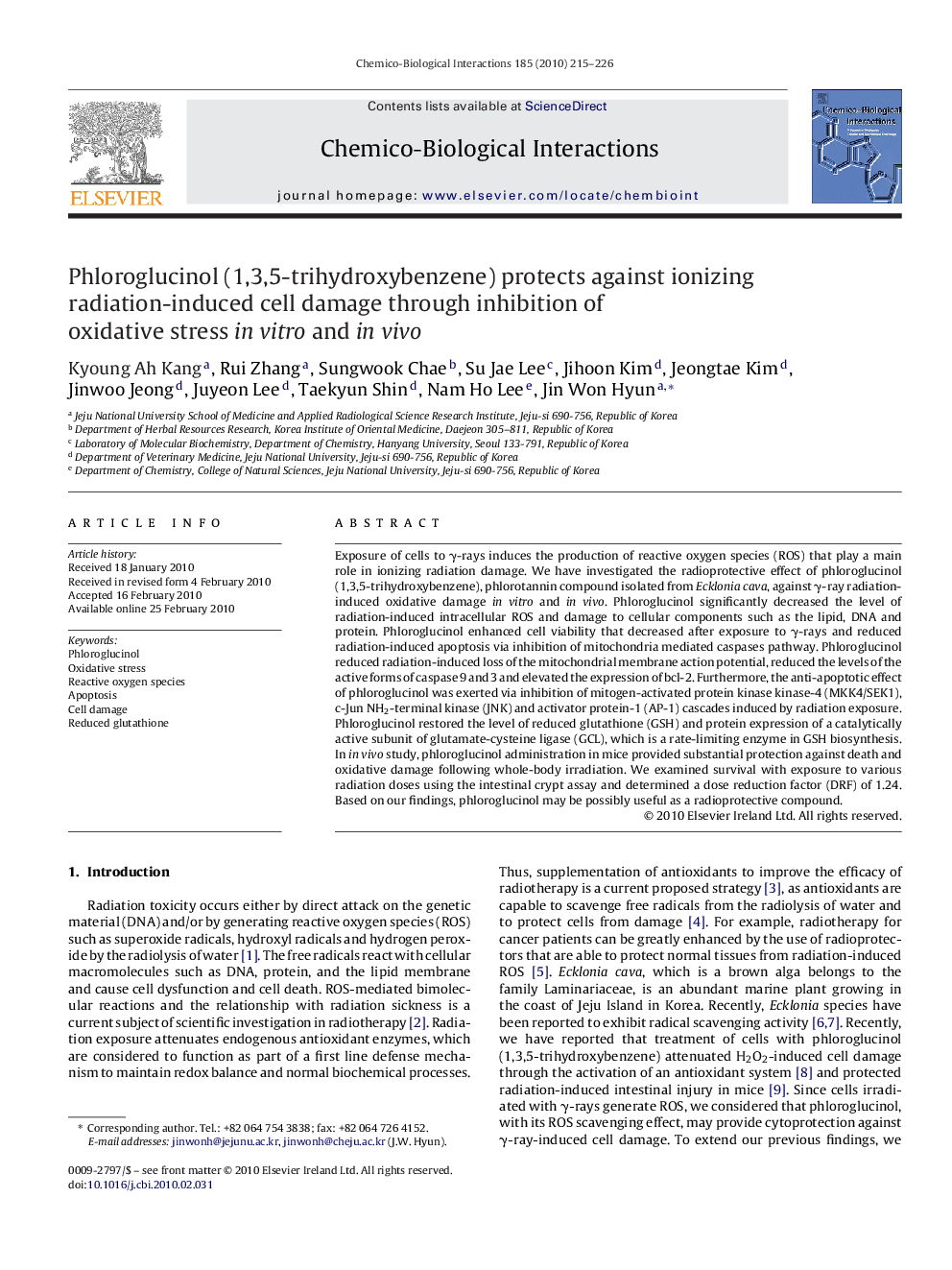| کد مقاله | کد نشریه | سال انتشار | مقاله انگلیسی | نسخه تمام متن |
|---|---|---|---|---|
| 2581083 | 1130172 | 2010 | 12 صفحه PDF | دانلود رایگان |
عنوان انگلیسی مقاله ISI
Phloroglucinol (1,3,5-trihydroxybenzene) protects against ionizing radiation-induced cell damage through inhibition of oxidative stress in vitro and in vivo
دانلود مقاله + سفارش ترجمه
دانلود مقاله ISI انگلیسی
رایگان برای ایرانیان
کلمات کلیدی
موضوعات مرتبط
علوم زیستی و بیوفناوری
علوم محیط زیست
بهداشت، سم شناسی و جهش زایی
پیش نمایش صفحه اول مقاله

چکیده انگلیسی
Exposure of cells to γ-rays induces the production of reactive oxygen species (ROS) that play a main role in ionizing radiation damage. We have investigated the radioprotective effect of phloroglucinol (1,3,5-trihydroxybenzene), phlorotannin compound isolated from Ecklonia cava, against γ-ray radiation-induced oxidative damage in vitro and in vivo. Phloroglucinol significantly decreased the level of radiation-induced intracellular ROS and damage to cellular components such as the lipid, DNA and protein. Phloroglucinol enhanced cell viability that decreased after exposure to γ-rays and reduced radiation-induced apoptosis via inhibition of mitochondria mediated caspases pathway. Phloroglucinol reduced radiation-induced loss of the mitochondrial membrane action potential, reduced the levels of the active forms of caspase 9 and 3 and elevated the expression of bcl-2. Furthermore, the anti-apoptotic effect of phloroglucinol was exerted via inhibition of mitogen-activated protein kinase kinase-4 (MKK4/SEK1), c-Jun NH2-terminal kinase (JNK) and activator protein-1 (AP-1) cascades induced by radiation exposure. Phloroglucinol restored the level of reduced glutathione (GSH) and protein expression of a catalytically active subunit of glutamate-cysteine ligase (GCL), which is a rate-limiting enzyme in GSH biosynthesis. In in vivo study, phloroglucinol administration in mice provided substantial protection against death and oxidative damage following whole-body irradiation. We examined survival with exposure to various radiation doses using the intestinal crypt assay and determined a dose reduction factor (DRF) of 1.24. Based on our findings, phloroglucinol may be possibly useful as a radioprotective compound.
ناشر
Database: Elsevier - ScienceDirect (ساینس دایرکت)
Journal: Chemico-Biological Interactions - Volume 185, Issue 3, 14 May 2010, Pages 215-226
Journal: Chemico-Biological Interactions - Volume 185, Issue 3, 14 May 2010, Pages 215-226
نویسندگان
Kyoung Ah Kang, Rui Zhang, Sungwook Chae, Su Jae Lee, Jihoon Kim, Jeongtae Kim, Jinwoo Jeong, Juyeon Lee, Taekyun Shin, Nam Ho Lee, Jin Won Hyun,